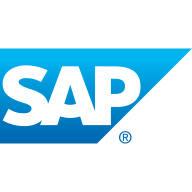

Snowflake and SAP BW4HANA are competitors in the data warehousing space. Snowflake appears to have the upper hand due to its scalability, flexibility, and multi-format support, which cater to diverse data needs.
Features: Snowflake offers scalability and flexibility through its robust distributed architecture and seamless processing of large datasets. Its Snowpipe feature supports real-time data ingestion, and multi-clustering reduces data contention. Time travel adds to data accessibility, allowing users to view historical data. In comparison, SAP BW4HANA provides specialized data warehouse functionalities within SAP ecosystems, with predefined business content models and strong integration with SAP ERP systems.
Room for Improvement: Snowflake could improve its geo-spatial query capabilities and provide a more intuitive pricing model. Users face challenges with support responsiveness and complex scripting requirements, and would benefit from enhanced ETL tools and AI features. Better integration with cloud providers like Microsoft Azure is also suggested. SAP BW4HANA struggles with integration outside of SAP systems and offers limited customization. Its high costs and absence of modern analytics and machine learning integration are potential barriers for adoption.
Ease of Deployment and Customer Service: Snowflake's cloud-based deployment facilitates rapid scalability and flexibility. While support documentation is comprehensive, users note sporadic delays in technical support. SAP BW4HANA's on-premises deployment integrates well with existing SAP infrastructure but presents time-consuming support processes due to ecosystem complexity. Snowflake provides agile deployment and better service engagement, favoring businesses seeking quick rollouts.
Pricing and ROI: Snowflake's pay-as-you-go pricing model aligns with usage, offering potential cost effectiveness for scaling businesses. It is perceived as affordable relative to competitors, albeit with some transparency issues. The ROI is driven by operational efficiency and enhanced data management. SAP BW4HANA incurs higher initial costs, thereby favoring larger enterprises already invested in SAP's ecosystem. This necessitates significant upfront investment, making it a challenging option for smaller organizations.
In the meantime, I found solutions independently and provided two solutions to my client.
I received great support in migrating data to Snowflake, with quick responses and innovative solutions.
The technical support from Snowflake is very good, nice, and efficient.
Snowflake is very scalable and has a dedicated team constantly improving the product.
The billing doubles with size increase, but processing does not necessarily speed up accordingly.
Snowflake is very stable, especially when used with AWS.
Snowflake as a SaaS offering means that maintenance isn't an issue for me.
Integration needs improvement.
Enhancements in user experience for data observability and quality checks would be beneficial, as these tasks currently require SQL coding, which might be challenging for some users.
Cost reduction is one area I would like Snowflake to improve.
The certification cost for SAP BW4HANA in 2025 is expected to be one lakh forty thousand.
Snowflake's pricing is on the higher side.
Snowflake lacks transparency in estimating resource usage.
The best features include the ability to create data sources directly on tables, and perform mapping without creating info objects.
One key feature is the separation of compute and storage, which eliminates storage limitations.
Being able to perform AI and Machine Learning in the same location as the data is quite advantageous.
| Product | Market Share (%) |
|---|---|
| Snowflake | 12.5% |
| SAP BW4HANA | 3.9% |
| Other | 83.6% |


| Company Size | Count |
|---|---|
| Small Business | 16 |
| Midsize Enterprise | 4 |
| Large Enterprise | 27 |
| Company Size | Count |
|---|---|
| Small Business | 28 |
| Midsize Enterprise | 20 |
| Large Enterprise | 56 |
SAP BW4HANA is a data warehouse solution developed by SAP for businesses looking to analyze big data in real time. It is designed to run on the SAP HANA database, offering improved performance and optimized processing of large data sets. SAP BW/4HANA provides an array of advanced analytics capabilities, including predictive analytics, text analytics, and spatial data processing. It also offers a modern, intuitive user interface and streamlined data modeling and administration tools, making it easier for businesses to access, manage, and utilize their data.
SAP BW4HANA Features
SAP BW4HANA has many valuable key features. Some of the most useful ones include:
SAP BW4HANA Benefits
There are many benefits to implementing SAP BW4HANA. Some of the biggest advantages the solution offers include:
Reviews from Real Users
SAP BW4HANA is a solution that stands out when compared to many of its competitors. Some of its major advantages are its hierarchical alert slicing, real-time insights, and its ability to transform large amounts of data.
PeerSpot reviewer, Srivatsav A., SAP BW/4HANA Specialist at a government, is very happy with the solution. He explains, "You can do hierarchical alert slicing and dicing out-of-box, which is not available in other solutions. I haven't come across that in Oracle or any other software provider."
“It has got wonderful features in terms of analyzing your production data, and it gives you real-time insight into productive maintenance. You can plan your budget, and you can map them against actuals. It gives you good insights on overall performance and processes,” says Amrit J., ERP Application Manager at an energy/utilities company.
In addition, a Technology Analyst at a tech services company mentions, "The most valuable feature is that we can transform a huge amount of data and apply business logic as per the requirements."
Snowflake provides a modern data warehousing solution with features designed for seamless integration, scalability, and consumption-based pricing. It handles large datasets efficiently, making it a market leader for businesses migrating to the cloud.
Snowflake offers a flexible architecture that separates storage and compute resources, supporting efficient ETL jobs. Known for scalability and ease of use, it features built-in time zone conversion and robust data sharing capabilities. Its enhanced security, performance, and ability to handle semi-structured data are notable. Users suggest improvements in UI, pricing, on-premises integration, and data science functions, while calling for better transaction performance and machine learning capabilities. Users benefit from effective SQL querying, real-time analytics, and sharing options, supporting comprehensive data analysis with tools like Tableau and Power BI.
What are Snowflake's Key Features?In industries like finance, healthcare, and retail, Snowflake's flexible data warehousing and analytics capabilities facilitate cloud migration, streamline data storage, and allow organizations to consolidate data from multiple sources for advanced insights and AI-driven strategies. Its integration with analytics tools supports comprehensive data analysis and reporting tasks.
We monitor all Data Warehouse reviews to prevent fraudulent reviews and keep review quality high. We do not post reviews by company employees or direct competitors. We validate each review for authenticity via cross-reference with LinkedIn, and personal follow-up with the reviewer when necessary.